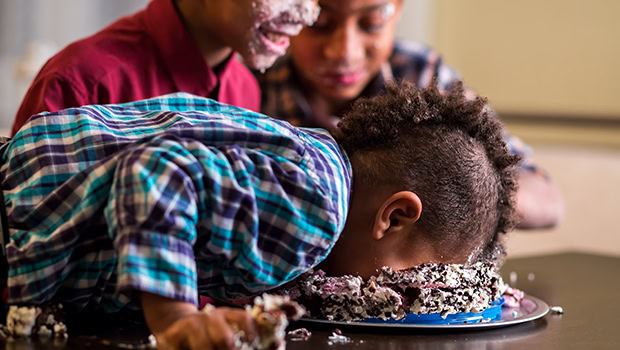How to Avoid Overcorrecting for a Low

Integrated Diabetes Services (IDS) provides detailed advice and coaching on diabetes management from certified diabetes educators and dieticians. Insulin Nation hosts a regular Q&A column from IDS that answers questions submitted from the Type 1 diabetes community.
Q – How do I treat a low without over-correcting for it?
A – Everyone with Type 1 diabetes at one time or another has had a bad low, the kind when all you want to do is eat everything in sight. There’s no reasoning with yourself – it’s as if someone has hijacked your self-control.
Physiologically, there is a reason for wanting to eat everything in sight – the body just wants to get blood sugar back up to a safe level. However, eating more than the needed amount of carbs typically results in high blood sugar levels, and then the roller coaster begins.
What is the proper way to treat a low?
Aim to bring your blood sugar level above 70 mg/dL.
It’s easy to consider a low a good time to treat yourself to the high-carb foods you normally might avoid, but that can lead to blood sugar swings and isn’t technically the most efficient way to treat a bad low.
Dextrose-based treatments (glucose tablets or gel) are best to get your blood sugar up to a safe level, even if they are not as culinarily satisfying as chocolate cake. Dextrose is the simplest form of glucose, and the body doesn’t have to break it down to start raising blood sugar levels. That’s important when you’re very low and need to quickly raise your blood sugar levels, especially if you already have insulin in your system from a previous bolus.
Keep your low treatment handy – in a glove compartment, purse, briefcase, gym bag, or even in the case of your meter. When you have something on hand, it makes it easier to treat a low with the right type of sugar. Let family or friends know where you keep your low supplies, in case they need to help.
Tempting as it is, avoid food for treatment since food takes a much longer time to digest and makes it more likely you’ll eat a lot more carbs than needed. If possible, do not use chocolate, nuts, or anything that contains fat or protein to quickly treat a low – they digest very slowly.
(Of course, when caught with a low and no low supplies handy, go with the bird in the hand, even if it’s food.)
How many carbs should I ingest to treat a low BG?
Probably a lot less than you think. Here are some guidelines to study before a low hits:
-If you (or more likely someone you care for) weigh(es) less than 60 lbs., a gram of carb will raise your blood sugar about 6 mg/dL.
-If you weigh 100-160 lbs., a gram of carb should raise your BG about 4 mg/dl.
-If you weigh 160-220 lbs., a gram of carb can raise you 3 mg/dl.
And so on. The more you weigh, the more carbs you need to bring blood sugar levels up.
Try to give the carbohydrates 15 to 20 minutes to raise blood sugar levels. Do a follow-up fingerstick rather than rely on a continuous glucose monitor (CGM) reading, since there is a lag time with CGMs. If you are still low, repeat the treatment. If you over-treat the low, consider getting some exercise before reaching for the insulin, if for no other reason than it will help you get away from the tempting kitchen.
Once the dust settles from a low, try and take stock of how many carbs you ingested to correct for the low and what the results were. Adjust your carb intake according to experience.
And while no one wants to find themselves in a position to need help with a low, don’t be afraid to ask for help from those around you or to call 911 if needed.
The takeaway? Prep for a low before it happens, and take stock of how the low was treated after it happens.
Integrated Diabetes Services provides one-on-one education and glucose regulation for people who use insulin. Diabetes “coaching” services are available in-person and remotely via phone and online for children and adults. Integrated Diabetes Services offers specialized services for insulin pump and continuous glucose monitor users, athletes, pregnancy & Type 1 diabetes, and those with Type 2 diabetes who require insulin. For more information, call 1-610-642-6055, go to integrateddiabetes.com or write info@integrateddiabetes.com.
Thanks for reading this Insulin Nation article. Want more Type 1 news? Subscribe here.
Have Type 2 diabetes or know someone who does? Try Type 2 Nation, our sister publication.